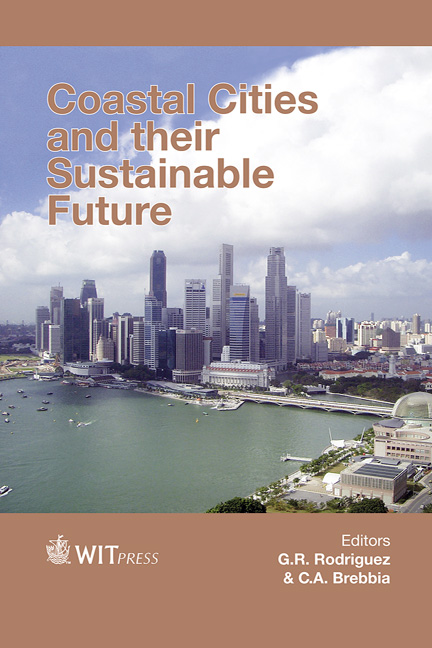Development Of Coastal Cities And Agglomerations: Pressure And Impacts On Coastal And Marine Ecosystems
Price
Free (open access)
Transaction
Volume
148
Pages
9
Page Range
63 - 71
Published
2015
Size
717 kb
Paper DOI
10.2495/CC150061
Copyright
WIT Press
Author(s)
M. de Andres, J. M. Barragan
Abstract
Coastal areas around the world are highly affected by human settlements, due to economic activities and land-use changes. Population growth has increased pressure on coastal and marine ecosystems, leading to their degradation, loss of ecosystem services, and human wellbeing. The main objective on this work is to study the main impacts of coastal development on coastal and marine ecosystems. We analysed the growth of coastal cities and agglomerations (CCAs) with more than 100,000 inhabitants in Latin America and the Caribbean (LAC) during 1945–2014. The analysis targeted the number of CCAs, and their corresponding populations. CCAs located in specific physiographic units, e.g., bays, estuaries or deltas, as well as CCAs located in vulnerable coastal and marine ecosystems, e.g., mangroves and coral reefs. Using remote sensing data and regional mapping, it was possible to identify physiographic units and ecosystems, which are suffering higher pressure due to the urban development. The results of this study revealed the extent of urban development occurred on certain habitats in the coastal zone in LAC. Currently, 42% of CCAs are located in bays. In addition, the urban population associated with deltas and/or estuaries increased eight times during the last seven decades. The number of CCAs located near mangroves increase from 26 to 334 during the same period; while urban population near coral reefs increased 12 times during 1945–2014. The rapid urbanization process has important implications for integrated ecosystem management. It is necessary, therefore, to strengthen integrated coastal zone management in urbanized areas because of its connection to the services that coastal and marine ecosystems provide to population.
Keywords
urban population, evolution, coastal and marine ecosystems, integrated coastal zone management





